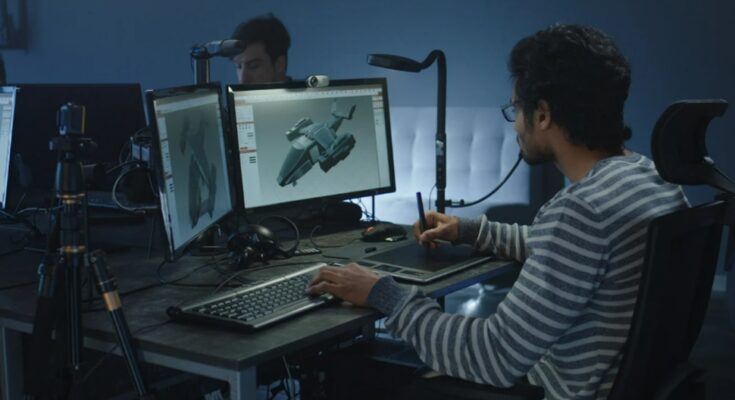The integration of 3d digital artwork into product design is reshaping the way businesses visualize, prototype, and communicate their ideas. With advancements in digital rendering, modeling, and real-time visualization, 3D artwork offers an immersive, precise, and highly customizable toolset for professionals. From enhancing consumer engagement to streamlining design iterations, it has become a critical asset in modern design workflows.
This transformation is particularly noticeable in industries like architecture, automotive, consumer electronics, and fashion, where visual fidelity and speed are paramount.
Enhanced Realism in Prototyping and Design
3D digital artwork enables designers to visualize products with photo-realistic detail before manufacturing. This capability not only saves time but also eliminates the cost of physical prototyping in the early stages. Designers can modify materials, lighting, and perspectives quickly, ensuring that their product concepts are as close to the final version as possible. This efficiency helps teams respond swiftly to feedback and reduces the risk of costly errors during production.
Composition Principles Drive Aesthetic Precision
One reason 3D digital art excels in product design is its grounding in strong visual composition principles. Understanding composition in digital art, such as balance, contrast, and symmetry, allows designers to create models that not only function well but also appeal to the eye. These principles guide how different elements are arranged in a 3D space, ensuring that the final product visuals are compelling and user-friendly.
Application in Modern Animation and Interactive Visualization
Beyond static renderings, 3D artwork plays a pivotal role in animation and simulation. Realistic movement and environmental interaction offer a new depth to product storytelling. Incorporating these capabilities allows professionals to build dynamic product demonstrations and interactive walkthroughs, which are especially useful for marketing or educational purposes.
The increasing use of 3D visuals in design processes also reflects a shift toward immersive platforms, including AR and VR. Methods like the use of 3D digital artwork in modern animation and design, including interactive techniques, are becoming standard for both client presentations and user testing, elevating the way products are evaluated and improved.
Driving Innovation Across Sectors
By adopting 3D artwork, companies can push innovation forward in product development. This includes rapid testing of form factors, generating consumer feedback through digital mock-ups, and accelerating go-to-market timelines. The flexibility and realism offered by digital design tools have redefined traditional workflows, fostering a collaborative environment where engineering, marketing, and design teams align seamlessly.
Moreover, with cloud-based collaboration tools and powerful rendering software, global teams can contribute to a single design in real time, making the process more efficient and transparent.
Conclusion
The shift to 3D digital artwork in product design and visualization is more than a technological upgrade—it’s a fundamental evolution in how professionals approach creativity, functionality, and communication. From composition techniques that refine the visual impact to real-time 3D environments that elevate interactivity, the benefits span every stage of the design cycle. As businesses continue to prioritize precision and speed, the role of 3D digital artwork will only grow more central in delivering innovative, market-ready solutions.



